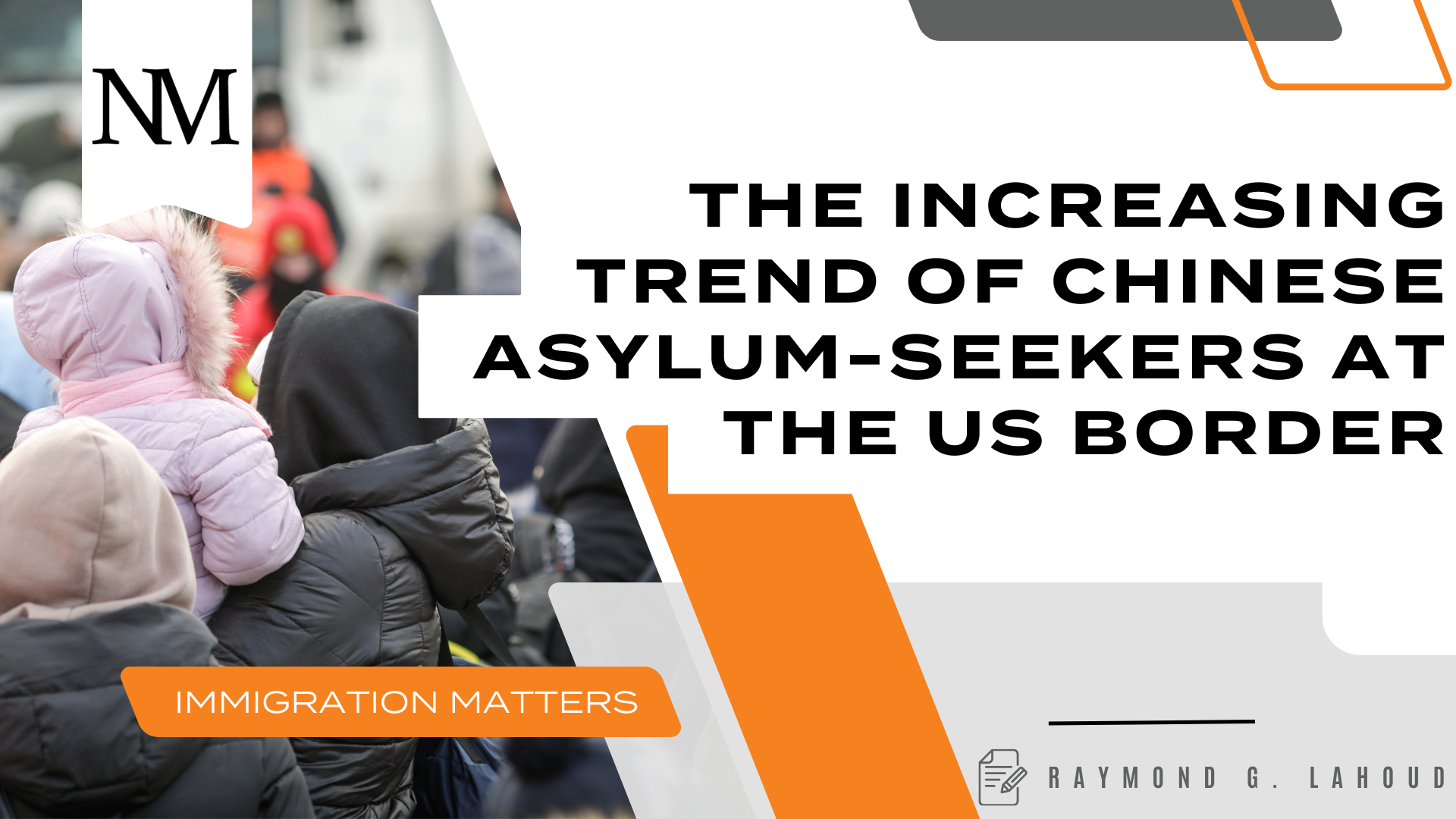The Increasing Trend of Chinese Asylum-Seekers at the US Border

The U.S. is witnessing a significant influx of Chinese migrants who are undertaking a perilous journey in search of asylum. This trend has highlighted the difficulties that many face while attempting to escape the political and economic challenges in their country of origin. While the pandemic and China's COVID-19 policies initially slowed the surge of people leaving the country, China's ongoing economic struggles and significant rise in youth unemployment have led Chinese nationals to flee their country in search of better opportunities. The United Nations estimates that China will see a net loss of 310,000 people through emigration this year, a sharp increase from the 120,000 recorded in 2012. Moreover, according to Panamanian immigration authorities, Chinese nationals ranked as the fourth-largest group to cross the Darién Gap during the initial nine months of this year, following Venezuelans, Ecuadorians, and Haitians.
This surge in Chinese migration reflects a profound sense of disillusionment with China's restrictive political environment and its struggling economy. The decision to leave the country is rooted in various factors, including limited economic opportunities and a notable rise in youth unemployment. Confronted with financial hardships, a growing number of individuals are adopting unconventional means, such as undertaking the hazardous journey through the Darién Gap jungle, propelled by the prevailing sentiment of "runxue," or “run philosophy,” symbolizing a prevailing urge to leave China behind.
The Journey, Challenges, and Struggles Faced
The new route to the U.S. via Ecuador has emerged as a popular path for Chinese migrants due to Ecuador's lenient visa policies for Chinese nationals. This has led to a significant rise in the number of individuals crossing the dangerous Darién Gap, increasing steadily over recent years. Social Media and messaging apps have played an essential role in guiding these migrants, providing tips on survival tactics, language translation, and financial planning, among other essential information.
Upon reaching the U.S.-Mexico border, Chinese migrants often face a complex legal process and a lengthy wait for their asylum cases to be heard. With limited resources and language barriers, many find themselves in makeshift campsites in the California desert, enduring harsh conditions while waiting to turn themselves in to U.S. authorities. With the soaring number of Chinese arrivals and the scarcity of resources, Catholic Charities of San Diego has stepped in to provide temporary shelters. Catholic Charities of San Diego uses hotels to provide shelter, including for 1,223 Chinese in September. The average shelter stay is a day-and-a-half among all nationalities. For Chinese visitors, it’s less than a day. However, the demand continues to outweigh the available resources, leaving many recent arrivals in a vulnerable and uncertain position.
The journeys of these Chinese asylum-seekers reflect the broader global migration trends and highlight the need for collaborative efforts in addressing the root causes of such mass movements. As the world grapples with ongoing geopolitical challenges, their experiences highlight the urgent need to address political instability, economic disparities, and human rights violations. In fact, the increasing number of Chinese seeking asylum at the U.S. border emphasizes the gravity of the challenges faced by individuals in their home country, which force them to face danger and the unknown in search of safety and better opportunities.
If you have any questions or concerns pertaining to immigration status or are facing difficulties in the immigration process, please do not hesitate to reach out to me at rglahoud@norris-law.com.




